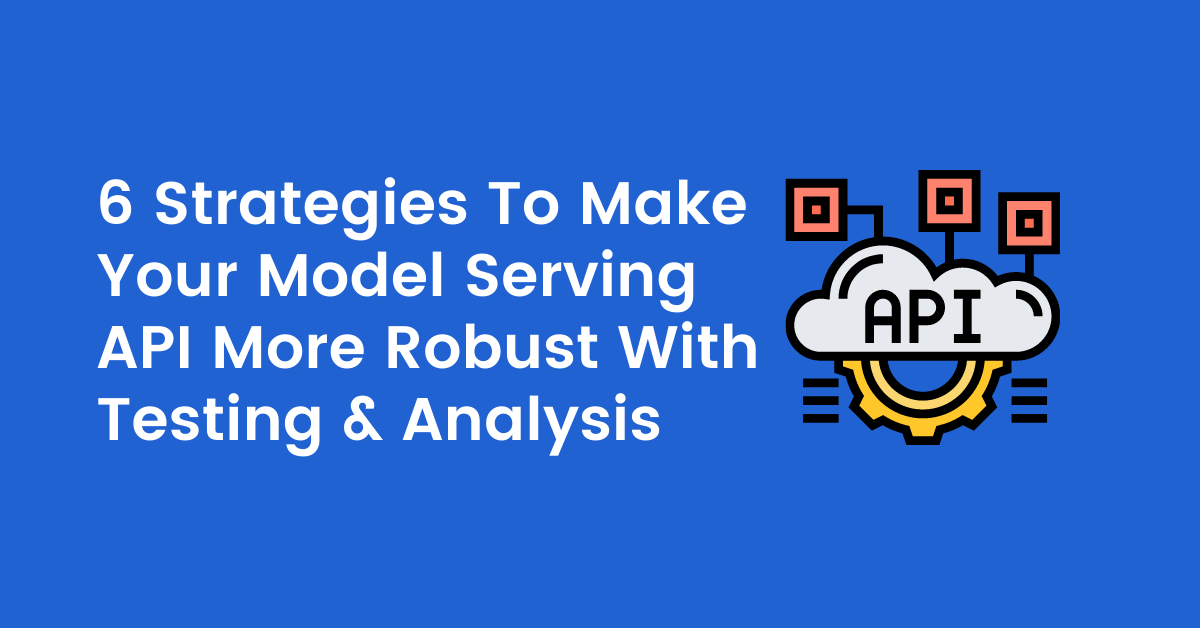This post will show you 6 strategies to make your model serving API more robust with testing and analysis.
Putting your API through its paces is a crucial part of ensuring it is resilient and reliable as well as purely functional.
You can go about API testing and analysis in a number of ways, with some approaches being more effective than others.
Here are just six strategies to put into practice if you feel that your current efforts are falling short.
Table of Contents
6 Strategies To Make Your Model Serving API More Robust With Testing & Analysis
1. Embrace Unit Testing
An important part of hardening any model-serving API is to carry different API tests on as many of the individual functions as possible.
Dissecting your API into its smallest quantifiable units and going over them with a fine toothed comb may sound like hard work, but it is actually one of the simplest and most effective methodologies.
The fewer inputs and outputs you are having to cope with, the easier it will be to spot problems and troubleshoot them. Solutions like Pytest may be most helpful in this context.
2. Analyze Performance Thoroughly
Performance is important whatever your API is designed to do, and if machine learning is part of the mix then it is even more vital to spot issues and optimize ASAP.
Locust is one of the top options for this purpose, as it can run performance tests that are in-depth and also produce actionable insights from the output files it generates.

3. Bolster Security Proactively
Exploits that target your API might not be a major concern, depending on the scale of your project and how accessible it is to third parties at the moment.
Even so, it is better to be security-conscious from day one, and once again there are tools to turn to which will root out inadequacies rather than allowing them to go unnoticed.
The appropriately-named Safety is one of the best examples of this, and is particularly appealing because it is free to use. Vulnerabilities that are found will be carefully explained and documented, keeping you in the loop and giving you a starting point for your ameliorative efforts.
4. Consider Containerization Complications
With containerized development growing in popularity, scanning for potential flaws in this environment should be another priority.
Docker offers comprehensive tools for this, and if your organization is small enough then you will not have to pay for the privilege of using them. You will need to do a little wrangling to get a text file output of the container scanning itself, but this is a minor complication in what is otherwise a straightforward process.
READ ALSO: Best Lightweight Antivirus For Old Computers [EXPERT LIST]
5. Scrutinize Static Code
Imperfections can exist at many levels through your API, and being able to examine the static code to pinpoint problems before they run riot is wise.
If you want a tool to do the hard work for you, Bandit is a good choice. It will alert you to common mistakes which might leave your API vulnerable to manipulation by malware and other modern cyber threats.
6. Break Out Of Bad Habits
As you grow as a developer, it can be possible to fall into bad habits which you might not even be aware of. This usually happens as a result of moving away from standard practices and adopting your own approach, either through forgetfulness or pure stubbornness.
Whatever the case, you can brush up on best ways to wrangle the underpinnings of your API by having your work analyzed by an unsympathetic tool like Pylint.
Errors of all sorts can be found in a jiffy, and Pylint will even rate your code between 1 and 10, so you can see where improvements need to be made and bad habits broken out of.
Strategies To Make Your Model Serving API More Robust With Testing & Analysis: FAQs
What types of testing are essential for a model serving API?
a) Unit Testing: Test individual components of the API, like input validation, preprocessing, and inference logic, to ensure they function independently as expected.
b) Integration Testing: Verify how different components interact and data flows through the API, ensuring seamless integration.
c) Performance Testing: Evaluate the API’s responsiveness, latency, and throughput under varied workloads, simulating real-world scenarios.
d) Security Testing: Identify and address potential vulnerabilities that could compromise data privacy or model integrity.
What analysis techniques can improve the API’s performance and accuracy?
a) Error Analysis: Analyze errors encountered during testing to identify root causes and implement fixes, improving overall stability.
b) Explainability Analysis: Explore why the model makes certain predictions to understand its behavior, identify potential biases, and build trust with users.
c) Fairness Analysis: Evaluate the model’s performance across different demographics to ensure unbiased outcomes and avoid ethical issues.
d) Drift Monitoring: Continuously monitor for performance degradation or shifts in input data distribution to proactively address potential issues.
How frequently should I test and analyze my model serving API?
Regular testing and analysis are crucial. Ideally, integrate them into your development cycle with:
- Unit and integration tests: Run with every code change or deployment.
- Performance, security, and drift monitoring: Continuous monitoring with alerts for anomalies.
- Error and explainability analysis: After deployments and periodically based on observed errors or feedback.
- Fairness analysis: Regularly, especially when dealing with sensitive data or diverse user groups.
What tools and resources can I use for testing and analysis?
Numerous tools are available based on your specific needs and platform. Consider:
- Testing frameworks: pytest, unittest (Python), JUnit (Java)
- Performance testing tools: Apache JMeter, LoadRunner
- Security testing tools: Burp Suite, OWASP ZAP
- Explainability libraries: SHAP, LIME, LIME explainable AI
- Fairness analysis tools: IBM Fairness 360, Google AI Platform Fairness Indicators
Conclusion
Remember, continuous testing and analysis are vital for a robust and reliable model serving API.
By actively identifying and addressing issues, you can ensure your API delivers accurate and trustworthy predictions, fostering user confidence and maximizing its potential impact.
INTERESTING POSTS
- Cybersecurity Strategies To Protect Your Critical SaaS Data
- 4 Essential Tips to Improve Home Security
- Unbiased Bitdefender Antivirus Review
- 8 Best VPNs For China And Hong Kong
- Multi-Platform Malware Framework ‘MATA’ On A Global Scale
- What You Need To Know About Android Application Security
- API Development: Everything You Need to Know
About the Author:
Christian Schmitz is a professional journalist and editor at SecureBlitz.com. He has a keen eye for the ever-changing cybersecurity industry and is passionate about spreading awareness of the industry's latest trends. Before joining SecureBlitz, Christian worked as a journalist for a local community newspaper in Nuremberg. Through his years of experience, Christian has developed a sharp eye for detail, an acute understanding of the cybersecurity industry, and an unwavering commitment to delivering accurate and up-to-date information.







